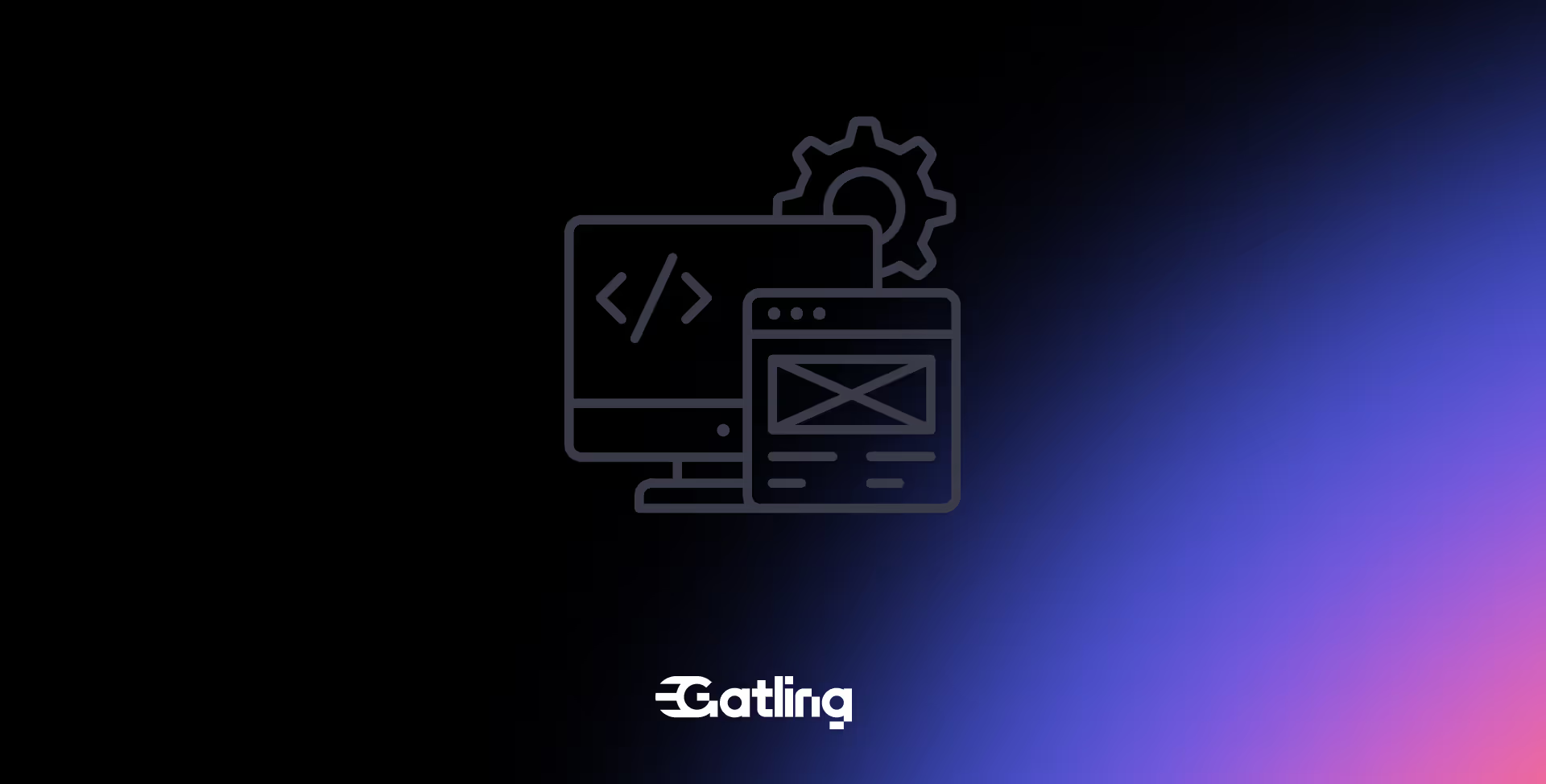Performance bottlenecks: common causes and how to avoid them
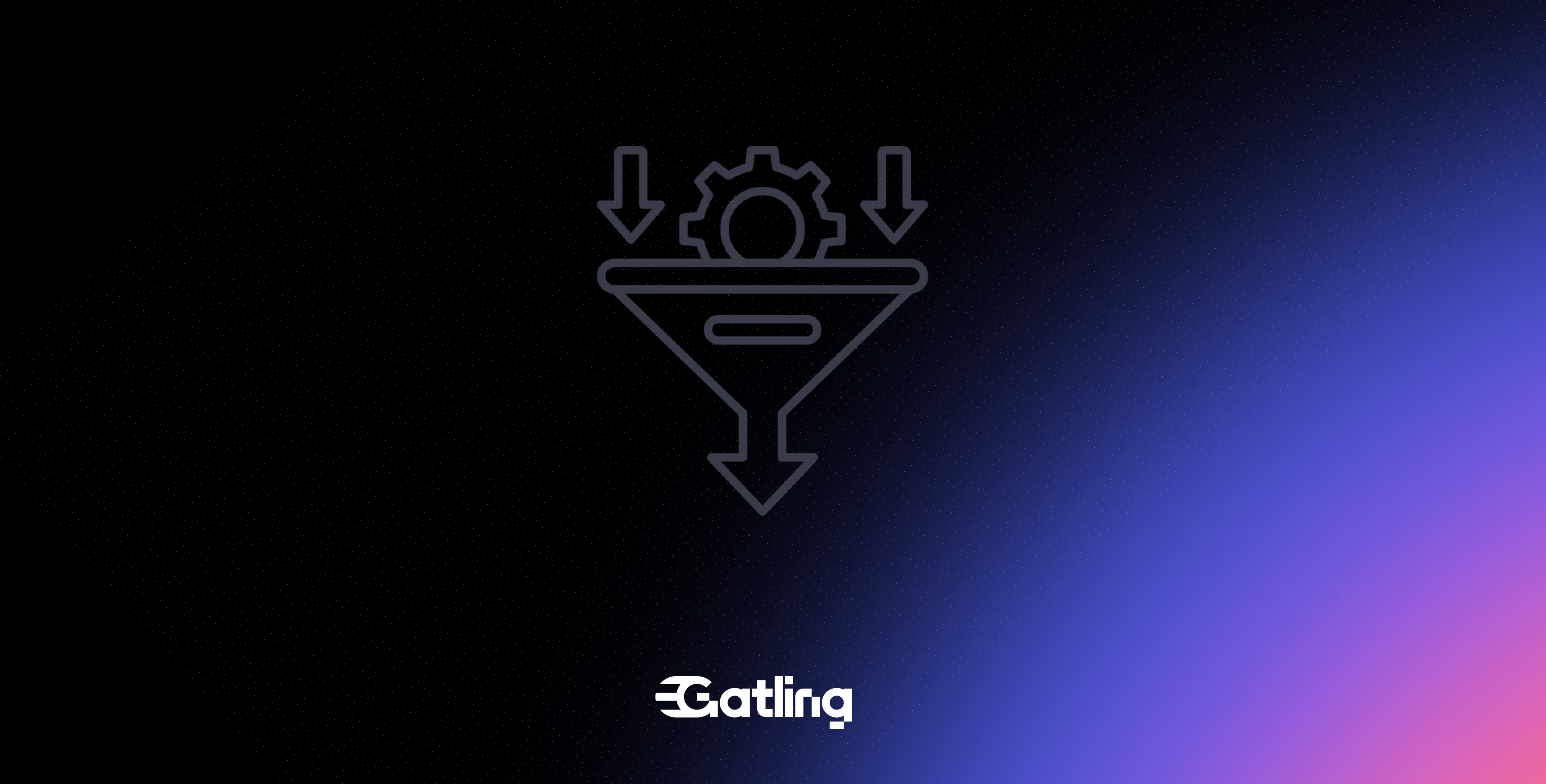
Last updated on
Monday
August
2025
Understanding and preventing application performance bottlenecks
It happens every year. A major shopping event arrives. Traffic spikes. And somewhere, an application fails. Customers leave frustrated. Revenue is lost. Now, with the clock ticking, IT teams scramble to identify the cause. Sounds familiar?
Performance bottlenecks drive users straight to competitors with faster, more reliable applications. But there's good news. Performance optimization is within reach—starting with identifying and resolving common performance bottlenecks.
What is a performance bottleneck?
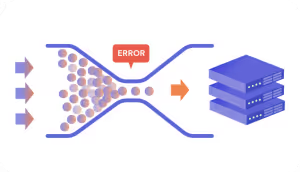
Think of your application as a highway. Traffic flows smoothly. Until it doesn't.
A bottleneck is that sudden lane closure causing congestion. It's a single component limiting your performance. The hidden obstacle slowing your business ****and your entire system's capacity. The constraint might hide in software code. Or lurk in hardware resources. Or emerge from configuration settings. Whatever its source, it restricts throughput. Overall performance degrades. Everything slows down.
These efficiency killers reveal themselves through warning signs. High memory usage. CPU utilization spikes. Sluggish response times. Increased latency. Addressing these bottlenecks early protects both system performance and user satisfaction. Your business can't afford to wait.
How bottlenecks impact user experience
Consider what happens during a peak traffic event when seconds costs millions. A customer tries to complete a transaction. The page loads slowly. They refresh. Nothing happens. They try again. The website crashed. Frustration builds. They leave.
This scenario plays out thousands of times daily. Poor system performance undermines more than user satisfaction. It damages SEO rankings. Conversion rates plummet. Revenue disappears. Research confirms most users abandon sites loading longer than three seconds. The business impact is immediate and measurable. In today's competitive landscape, application performance directly affects profitability.
How to identify a bottleneck
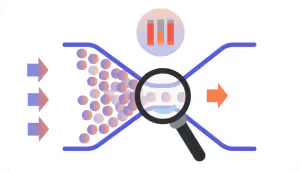
Engineering teams face a common challenge. Performance degrades unexpectedly. But why?
Identifying bottlenecks requires systematic investigation. Watch for warning signs first. Slow response times. Unexpected crashes. Growing memory usage. Unpredictable downtime. These symptoms point to underlying performance problems.
Next, simulate real-world conditions. Performance testing tools like Gatling recreate authentic scenarios. Average Tuesday traffic. Holiday surge volumes. Pre-launch peaks. This approach exposes potential bottlenecks before real users encounter them.
Once patterns emerge, performance monitoring tools become invaluable. They pinpoint specific causes. Is memory consumption excessive? Is CPU usage spiking? Is network congestion building? Are database queries inefficient?
Gatling Enterprise simplifies this process considerably. It integrates load testing directly into development workflows. Real-time dashboards alert teams to issues. Comparative performance metrics across test runs reveal troubling patterns. Problems get resolved before reaching production.
{{cta}}
Common causes of application performance bottlenecks
Software limitations

When your architecture becomes the enemy
It happens in enterprises worldwide. Adding servers doesn't help. Upgrading hardware makes little difference. The problem lies deeper.
Modern applications often fall victim to architectural limitations. Legacy frameworks can't leverage multi-core processors effectively. This creates processor bottlenecks no hardware upgrade can fix.
Development teams must regularly audit their code base. Eliminate unnecessary processing loops. Prevent memory bloat. Schedule refactoring sessions. Otherwise, technical debt accumulates into performance-limiting problems that impact business continuity.
CPU utilization
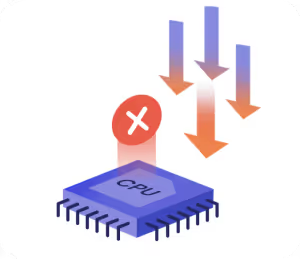
The processing power breaking point
During peak periods, it's a familiar story. CPU utilization jumps from 30% to near 100%. Systems slow dramatically. Customer experience suffers.
High CPU utilization typically indicates inefficient algorithms. Or missed caching opportunities. Or unexpected traffic surges. When CPU resources approach their limit, everything degrades. Request queues grow. Response times extend. Users become frustrated.
Implementing proper performance monitoring with appropriate alerting gives operations teams critical early warnings. This allows proactive response before performance issues impact revenue.
Memory utilization

The resource leak that nobody notices until too late
The pattern repeats across industries. Applications run smoothly for days. Then mysteriously crash. Investigation reveals memory bottlenecks gradually consuming available resources.
Memory bottlenecks develop when applications exhaust available physical memory. Or manage it inefficiently. Memory leaks—where resources never get released—create performance degradation until failure occurs. Even well-functioning caches become problematic when uncontrolled.
Implementing proper memory allocation strategies prevents these issues. Regular monitoring using performance counters catches problems early. Application performance remains stable. Business continues uninterrupted.
{{card}}
Database queries
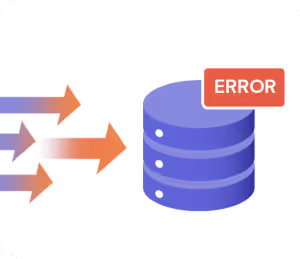
When simple questions bring complex systems to a halt
Product searches during peak hours. Financial calculations at month-end. Customer data retrieval during campaigns. These scenarios often reveal database bottlenecks.
Database operations frequently hide the most significant performance issues in enterprise applications. A single inefficient query can trigger system-wide slowdowns. Connection pools get exhausted. Resource utilization increases. Query performance plummets. Everything slows down.
Load testing tools identify problematic queries under stress conditions. This enables teams to implement optimization strategies. Better indexing. Connection pooling. Query refinement. These improvements maintain database performance even as data volumes grow exponentially.
Network utilization

When your digital infrastructure hits capacity
Global enterprises face this regularly. Performance varies dramatically between locations. Some offices experience excellent responsiveness. Others endure frustrating delays. Network latency often explains the difference.
Network bottlenecks emerge from insufficient bandwidth. Or mismatched hardware. Or unexpected traffic patterns.
Common issues include oversubscribed switches. Improperly configured load balancing. Network devices at capacity. Comprehensive stress testing identifies these limitations before they impact business operations.
Disk usage
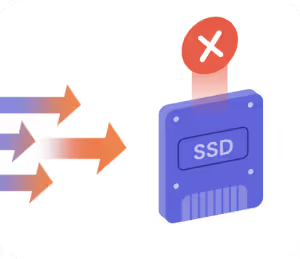
The storage bottleneck slowing everything down
Enterprise applications increasingly process massive datasets. Traditional storage often becomes the limiting factor. Performance degrades despite server upgrades.
I/O bottlenecks become apparent as applications scale. This particularly affects operations handling large files or datasets. Traditional storage struggles with concurrent operations that modern solutions handle easily.
Upgrading to SSD technology. Implementing strategic caching. Addressing fragmentation. These approaches dramatically improve performance for data-intensive enterprise applications.
Can bottlenecks change locations?
Enterprise IT teams observe this phenomenon regularly. They resolve one bottleneck. Another immediately appears elsewhere. This migration pattern frustrates optimization efforts.
Performance constraints rarely remain stationary as systems evolve. Addressing one limitation often reveals another previously masked issue. Database improvements expose application code inefficiencies. Network upgrades highlight storage limitations.
This dynamic nature requires continuous monitoring and regular testing. One-time optimization efforts quickly become outdated. Ongoing vigilance protects complex applications as they grow and change.
Best practices for avoiding performance bottlenecks
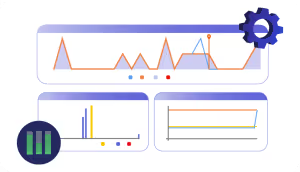
Leading enterprises take a proactive approach. They integrate performance into their development culture. Testing becomes routine. Monitoring becomes continuous. Problems get caught early.
These best practices build performance resilience:
- Adopt load testing early: Integrate tools like Gatling during development. Finding issues during coding costs dramatically less than discovering them in production. Make performance everyone's responsibility.
- Automate performance monitoring: Deploy systems that alert teams to degradation before customers notice. Transform reactive firefighting into proactive optimization. Stay ahead of issues.
- Optimize resource usage: Balance resource allocation efficiently. Ensure CPU, memory, and I/O systems work harmoniously. Prevent artificial constraints. Maximize existing infrastructure.
- Standardize development workflows: Establish coding standards that prioritize performance. Implement peer reviews identifying potential bottlenecks early. Build quality from the beginning.
- Use configuration-as-code: Version control environment settings. Prevent configuration drift. Ensure consistent performance across development, testing, and production environments. Eliminate surprises.
- Run stress testing regularly: Schedule extreme load testing. Understand system limitations before they matter. Improve them methodically. Be prepared for peak events.
- Invest in observability: Deploy comprehensive monitoring dashboards. Gain visibility into performance metrics. Enable continuous optimization based on real-world patterns. Make data-driven decisions.
{{cta}}
The importance of load testing
For enterprise systems, preparation makes all the difference. Financial services providers discover authentication limitations during performance testing, not tax season. Retailers identify checkout bottlenecks before major shopping events, not during them.
Systematic load testing provides crucial insights. It reveals hidden bottlenecks before customers find them. It informs capacity planning with data, not guesswork. It validates that performance optimization efforts deliver expected improvements. It builds confidence throughout the organization.
Gatling equips enterprise teams with powerful capabilities. Simulate realistic traffic patterns matching actual user behavior. Monitor system responses under varying conditions. Evaluate critical metrics including response time, throughput capacity, and resource utilization. Identify database bottlenecks and processing limitations before they impact operations.
Performance testing platforms like Gatling and Gatling Enterprise integrate these capabilities throughout your application lifecycle. They work seamlessly with CI/CD pipelines. They prevent performance regressions. They provide actionable insights maintaining optimal performance despite growing demands and evolving infrastructure.
Ready to find and fix your performance bottlenecks?
The contrast is striking. Organizations with comprehensive performance testing handle their biggest days flawlessly. Their competitors experience outages. The difference? Preparation. Testing. Confidence.
Use Gatling to:
- Detect memory bottlenecks and CPU constraints before they impact revenue
- Validate application performance changes before production deployment
- Monitor response time and system behavior under realistic load conditions
- Integrate automated testing into development pipelines
Start your free trial today. Or book a demo. Experience the confidence that comes from knowing exactly how your applications will perform when your business needs them most.
FAQ
FAQ
Related articles
Ready to move beyond local tests?
Start building a performance strategy that scales with your business.
Need technical references and tutorials?
Minimal features, for local use only



